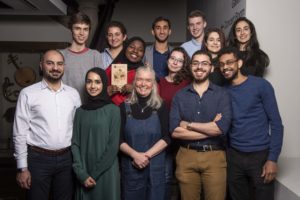Child labour in the cocoa industry

Student volunteer Chloe Neal examines child labour in the cocoa industry and fair trade alternatives.
Unless you’ve been living as a recluse for the past few weeks, you’ll know that Valentine’s Day is heading our way. What does this mean? It means that we have a potential chocolate avalanche on our hands. I’m talking bite-size hearts, pink truffles, and a whole lot more sweet stuff where that came from.
But before we dive into the avalanche head first, let’s consider how exactly some of our favourite chocolates are made. Perhaps then they won’t be our favourite after all.
The cocoa industry in Ghana and Côte d’Ivoire has been subject to increased attention during recent years. As majority producers of the globe’s cocoa supply, reports of child labour prevalent within these areas are concerning to say the least. Often resulting from poverty, the children in question are coerced and encouraged to work on cocoa farms. Amongst less than sanitary conditions, they must utilise machetes as well as various pesticides in order to cultivate cocoa plants. This is certainly not child’s play.
In fact, Convention 182 of the International Labour Organisation defines the worst forms of child labour as including “all forms of slavery or practices similar to slavery” as well as work which “is likely to harm the health, safety or morals of children.” Such instances are clearly evident within the cocoa industry.
Taking Convention 182 into account, the Harkin-Engel Protocol (2001) was signed as a public-private agreement to end extreme child labour within the cocoa industry by 2005. This document highlighted the necessity for governments, cocoa producers, global industry, organised labour, non-governmental organisations, as well as consumers to work together so as to achieve its aim. Essentially, it was the first agreement of its kind.
However, by 2005 this aim had not been sufficiently addressed. After the revised deadline of 2008 also remained unmet, the ‘Declaration of Joint Action to Support Implementation of the Harkin-Engel Protocol’ (2010) was signed. This declaration pledged to continue the protocol’s work, with the new aim of reducing the worst forms of child labour by 70% in time for 2020.
Whilst this persistence is admirable on paper, with the likes of The Hershey Company, Nestlé, and Mars Incorporated onboard, the continual shift of deadlines indicates that not enough is being done at a satisfactory rate. Moreover, even if the 2020 deadline is indeed met, there will still be over a quarter of remaining children subject to unregulated cocoa farms.

Fair trade offers another possible solution. For instance, the certification Fairtrade aims to tackle child labour by: “empowering and strengthening the positions of farmers in international supply chains, helping them to become organised within their communities, as well as enabling them to earn a better deal from the sale of their produce.”
These aims are evidently at work when we consider such cocoa farms as Kuapa Kokoo. Established in 1993, it is a Fairtrade certified cooperative in Ghana which oversees checks on farms so as to ensure a safe working environment and teaches children about their rights via Kids’ Camps. Hence we can see that it is perfectly possible for humane and successful cocoa farms to function when given the chance.
There are of course downsides to this system also. For example, one of the most recent contentions concerning Fairtrade is that some chocolate bars labelled as such may not in fact consist of 100% Fairtrade cocoa beans. Nonetheless, it is arguably better to buy a chocolate bar with some roots in fair trade rather than one with none at all.
Taking these factors into account, it appears that there is as of yet no perfect solution to the hardships still faced by many children on West African cocoa farms. Undoubtedly, much work still needs to be done, a fact which we as chocolate consumers must all take on board and consider since we are an essential part of the cocoa industry ourselves.





Recent comments